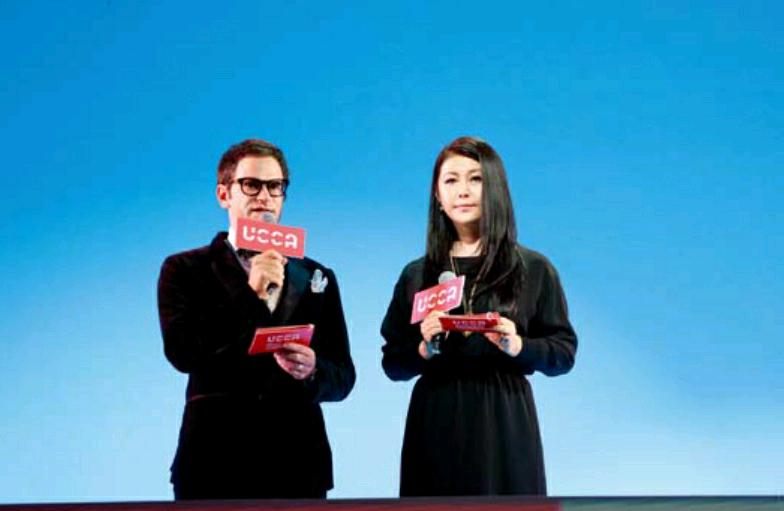Art Goes Public
2016-10-25byGongHaiying
by+Gong+Haiying
As night fell on June 30, 2016, Ul- lens Center for Contemporary Art(UCCA) and the Ullens Foundation released a joint statement at their official website, declaring that Guy Ullens, founder of both organizations, was planning to transfer UCCA and his personal collection, an announcement that sparked concern from the art circles across China.
UCCA Era
Guy Ullens is a Belgian collector who began acquiring modern Chinese art in 1987. Today, 80 percent of his 2,000-piece Chinese collection held in Switzerland is categorized as contemporary art, making him the foremost collector of modern Chinese art.
In November 2007, Ullens founded UCCA in Beijings 798 Art District, just as the area was beginning to blossom. Designers Jean-Michel Wilmotte from France and Ma Qingyun from China preserved the original architectural style of a 1950sera workshop when transforming it into an 8,000-square-meter artistic space for international exhibitions.
Well-known Chinese art critic and event planner Fei Dawei was recruited as UCCAs curator, and he themed its inaugural exhibition: ‘85 New Wave: The Birth of Chinese Contemporary Art. “China experienced its first zenith of artistic creation in 1985, forming the basic structure of contemporary art in relation to its art history,”explains Fei.
The exhibition became Chinas first showing of globally-influential contemporary Chinese art. Not only did the event showcase the exhibition spaces unique architecture and the works profundity, but it left a massive impact on the Chinese art market, arousing retrospective fever and reflection on Chinese art during the 1980s. For quite a while, UCCA was praised as a“good example of museum-caliber private artistic space for modern Chinese art,” and Ullens, its founder, gained a sterling reputation in China.
After a beautiful inaugural exhibit, UCCA hosted over 100 exhibitions across the subsequent decade and welcomed more than 4 million visitors. Covering a wide array of contemporary Chinese art, it illuminated the veins and stages of development with group exhibitions like “Breaking Forecast: 8 Key Figures of Chinas New Generation Artists (2009)” and “ON/OFF: Chinas Young Artists in Concept and Practice (2013),”highlighted the charm of modern Chinese art via solo exhibitions of artists like Liu Xiaodong and Diao Deqian, and traced ideological trends and cultural phenomena through exhibitions like “Rauschenberg in China (2016).” These major exhibitions have each gifted UCCA with distinctive features and enhanced its reputation until it became an international brand.


“UCCA has become the top choice for solo exhibitions for many working artists from around world,” declares Xie Suzhen, an eminent exhibition planner and art director of Yinchuan Modern Art Gallery.
In 2009, Ullens began selling his personal collection of Chinese art, which caused two spikes in the Chinese art market. In both spring and autumn that year, Poly Auction in Beijing saw sales of a number of big-ticket Chinese calligraphy and painting works, both ancient and modern. Among them, Eighteen Arhats by Wu Bin of the Ming Dynasty (1368-1644) and a calligraphic work by Zeng Gong, one of the eight great calligraphers of the Tang and Song (618-1279) dynasties, each sold for more than 100 million yuan. In 2011 at Sothebys spring auction, Forever Lasting Love by contemporary Chinese artist Zhang Xiaogang sold for HK$79.06 million.
Never before were so many questions asked about Ullens, as a debate rose about whether a Western collector was about to“sell out” contemporary Chinese art.
Crisis or Opportunity?
The rapid spread of the news that UCCA was about to be sold bothered many Chinese investors and art lovers. “Because of its board of directors system, it will effectively transform into the operational mode of a foundation,” opines curator Wang Chunchen. “Mr. Ullens announced the decision so suddenly, that the trajectory of UCCAs transition is undoubtedly challengeable.”
Both UCCA and other art galleries in China face a common challenge in determining how to merge such public platforms into the “personalized era.”
In the West, many art galleries have already been successfully transformed. Century-old private gallery Tate Britain, for example, smoothly transformed into a public institution by using the operational mode of a foundation. UCCAs present turning point, however, is more complicated than Tates.
“UCCA must accomplish the mission of transforming itself at its own cost via its own operations and fundraising, while all the expenses at Tate, including rent, water, power, and labor, were financed by the government,” illustrates Xie Suzhen. “UCCA cant just follow what Tate did.”
Over the last few years, stakeholders of UCCA have made tireless efforts and achieved tentative success. In August 2011, Xue Mei was promoted from retail director to CEO, and in January 2012, Jér?me Sans, an Italian-American world-renowned curator, was recruited as curator of UCCA during restructuring of the third-generation leading body. In May 2012, UCCA Store, one of the highest-profile art stores in China, established UCCA Store @ Design, a creative “lab” for art marketing that birthed its own brand. By October that year, UCCAs sponsorship council and academic committee had been founded and required membership dues for access to various campaigns organized by the UCCA. At the end of the year, UCCA held its first annual charity auction.
Such moves have brought dramatic changes to the organizations methods of raising working capital. In 2015, UCCA spent a total of 40.92 million yuan, 25 percent of which was from Ullens, 25 percent from enterprise sponsors, 20 percent from charity, 20 percent from its store, and 10 percent from private sponsorship, namely membership of the council.
Some welcomed Ullens decision to sell UCAA as a new challenge. Others consider it an opportunity that other Chinese private art galleries, financed completely by their respective founders, will never get. Many long to become public institutions with foundation systems.
Exactly how to make a graceful transformation is a pressing issue for many private art galleries in China. The auction of much of UCCAs collection is likely only the start of this journey.